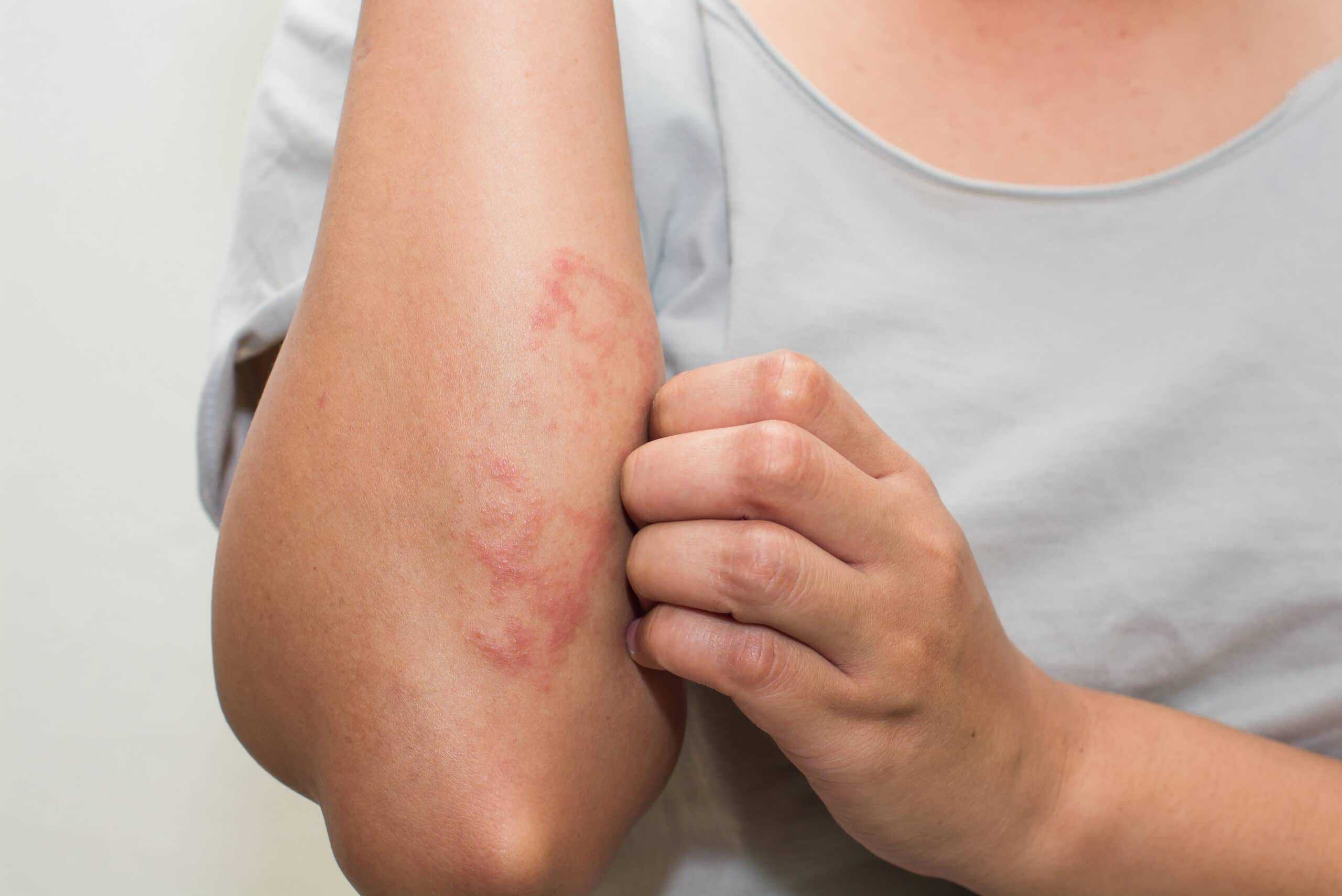
Eczema is a common skin condition that usually begins before your child is one year old. The affected skin is dry, red and itchy. Sometimes these areas of skin can become cracked, weepy and then scab over. Unfortunately there is no cure for eczema, but there are many ways to keep eczema under control and help your child feel more comfortable. Eczema is not contagious.
Babies with eczema usually have a red, dry rash on their face. The rash may be on their scalp, body, arms and legs or behind their ears. The rash is very itchy and may keep them awake at night. In toddlers and older children, the eczema rash is often in the skin creases around the knees, wrists, elbows and ankles. In some children the rash can cover their entire body.
It is common for the severity of the eczema to change, and you will notice that sometimes your child’s eczema is mild, while at other times it gets worse. It is important to effectively manage the eczema and control it as soon as it flares up.
Secondary bacterial or viral skin infections are also common in children with eczema, especially when the eczema is not well controlled. Do not allow anyone with a cold sore to kiss your child, as the eczema may become infected with the cold sore virus. The signs of a secondary infection are weepy, crusted and broken areas of eczema.
The cause of eczema is not known. If a member of your family has eczema, asthma or hay fever, then it is more likely that your child will have eczema. Some children with eczema may also develop asthma or hay fever.
Eczema can be triggered by a number of things, such as:
- becoming overheated with clothing, blankets, heaters
- dryness of the skin
- irritation from soaps, detergents, fabrics or other chemicals
- food allergies or intolerances
- allergies to environmental allergens, such as dust mites, plant pollens or animal fur
- viruses and other common infections.
Eczema can be well controlled at home in most children by identifying and avoiding triggers. Using the following strategies will help control the eczema and make your child more comfortable. Each child may react to different things, and it may take a while to work out what is irritating your child’s skin. Some common things that can irritate the skin include:
- dummies, dribbling or food around the mouth – apply thick moisturiser around the mouth, wash the skin with a soft, wet towel after eating and then reapply the moisturiser
- prickly materials, such as woollen or acrylic clothing, bedding and car seat covers
- detergents, soaps, bubble baths, antiseptic washes
- toothpaste – use a product without SLS as an ingredient
- environmental allergens, such as pet fur, pollen and house dust mites – if you think your child may be allergic to one of these allergens, take them to see an allergist.
A thick moisturiser with no fragrance should be used as often as necessary on your child, even when the skin is clear of eczema. Some children will require moisturiser application once or twice a day, while others will need it more often. Thicker creams are more effective than lotions. Fragrance-free moisturisers, bath oils or soap-free body wash (not plant-based) should be used in the bath and shower.
It is a good idea to bathe your child at least once a day in a cool bath. The bath should be no hotter than 30°C, and have one to two capfuls of plain, non-perfumed bath oil added.
Scratching makes the eczema worse and can cause infection. Try these ideas to help them stop scratching:
- Apply a soft, cool, wet towel to the itchy area for immediate relief, and leave on for 5–10 minutes. Remove the towel and apply a thick layer of moisturiser.
- Apply wet dressings at bedtime, particularly if the eczema is not controlled within 24–48 hours of starting cortisone treatment (if prescribed – see below). Wet dressings should be stopped when the eczema has cleared and then used again if it flares up. Wet dressings are very effective and are usually only needed for three to five nights.
- A wet T-shirt or singlet underneath a thin layer of cotton clothing is a good way to reduce the itch and redness on your child’s body. You can repeat this throughout the day and night until the itch and redness subside.
- Use a mineral salt spray (available at pharmacies) for immediate relief of itch.
- Distract your child when they are scratching.
- Keep your child’s fingernails short and clean.
Most children with eczema do not have any reactions to food. However, in some children, food allergy may be a trigger.
Take your child to the GP if:
- your child’s eczema is not getting better after two days of regular treatment
- your child is showing signs of infection: weepy, crusted and broken areas of eczema
- you are concerned about your child’s health or skin for any reason.
If your child’s eczema has developed a bacterial infection, they may need antibiotics. Very occasionally, if your child has a severely infected rash, they may need to be treated in hospital. Bleach baths may be recommended if your child’s eczema is infected and difficult to control. If your child’s eczema is complicated or difficult to treat, a doctor or nurse practitioner will prepare an eczema treatment plan for your child.